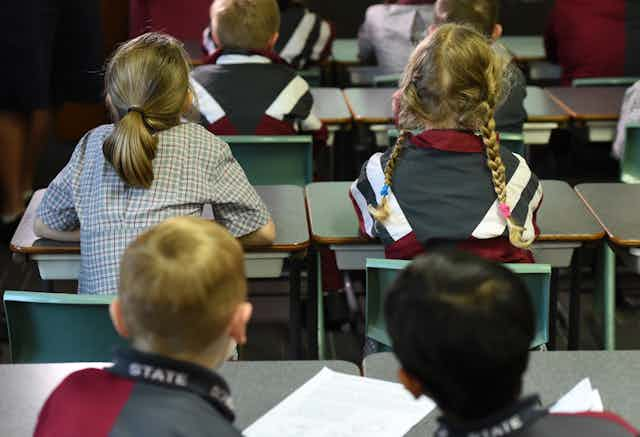The Commonwealth Minister for Social Services, Christian Porter, recently floated the idea of linking welfare payments to children’s school attendance rates.
But research and results from ongoing trials show this policy approach doesn’t really help address the problem.
The idea follows on from the success of the no-jab-no-pay policy where vaccination rates improved after child care and family tax benefits were put on the line.
This was a positive outcome. But in order to comply with their obligations, families only needed to visit a doctor a few times and the problem was solved.
School attendance, however, is a more complex problem, and one that requires a concerted effort on a daily basis over many years.
Trials show little improvement
A few years ago a similar idea was trialled in selected Queensland and Northern Territory communities.
An evaluation found that the threat of suspending welfare payments was an effective motivator for parents, but a number of problems meant the trial did not result in reduced absence.
These problems included delays between absence happening and payment being suspended, and families learning that there was only a small chance their payments would actually be suspended.
Any new approach to linking welfare payments to attendance must address the flaws of previous trials. It will require the cooperation of schools and the availability of accurate, real-time data.
Other reasons why children miss school
There also needs to be an understanding that there are many reasons why children miss school, and many of these reasons will not be impacted by welfare cuts.
Obstacles to school attendance can include transport access, parental disability or mental illness. Simply cutting welfare will not solve these problems.
It may be that this policy approach motivates some parents to become more engaged with the school about why the student isn’t there. But for schools to have any hope of addressing avoidable absence problems among students, they need to know why those students aren’t coming to school.
If this policy can improve engagement with parents, that is a positive outcome. However, punishing already disadvantaged families for things that may be out of their control is not a way forward.
The case for linking welfare to attendance is seemingly straightforward.
Tackling unauthorised absences
Research shows that regular attendance at school is important for achievement outcomes and social-emotional development.
We also know that students from disadvantaged backgrounds have higher absence rates, and that these absences contribute to lower levels of achievement and engagement in education for these students.
And while most absences are for good reasons like illness, some students will be absent for either unacceptable or unknown reasons, described as unauthorised absences.
Unauthorised absences are more strongly linked with poor outcomes and would be the type of absence that the policy is aimed at.
Our report of Western Australian government school students shows that on average, total absence rates are about 8% for primary students and 13% for secondary students.
One-third of absences in primary school are unauthorised, as are 39% of absences in secondary school. About one-quarter of unauthorised absences are explained but not accepted by the school, with the remaining absences occurring without explanation.
The report also showed that student “attendance careers” are established upon entry into school and are relatively stable throughout school.
This is not surprising when we consider that the main drivers of unauthorised absence are family-related factors that are largely beyond the influence of schools. And where it is the case that absence is related to an issue at school, disadvantaged families seem to have more difficulty addressing those problems.
Need to aim policy at families
Schools certainly need to make sure they are places that students want to be, but because absence is predominantly a family issue, then reducing avoidable absence needs to start with families.
This is where a carefully designed policy linking welfare and absence might be useful, but only with appropriate supports available for vulnerable families.
Given what we know about student absence, the features of a policy should include:
A focus on unauthorised absences among primary students. Older students increasingly have their own reasons for missing school that cuts to parent welfare are unlikely to address.
Assurances that families will not be punished for circumstances beyond their control. Welfare fines or suspensions may help motivate parents to address the barriers that are in the way, but they’ll need help overcoming them.
Finally, if the government is intent on implementing a trial of this policy, then we owe it to the families, children and teachers to implement a robust evaluation. Preferably one with random assignment to examine the intended and any unintended outcomes.

